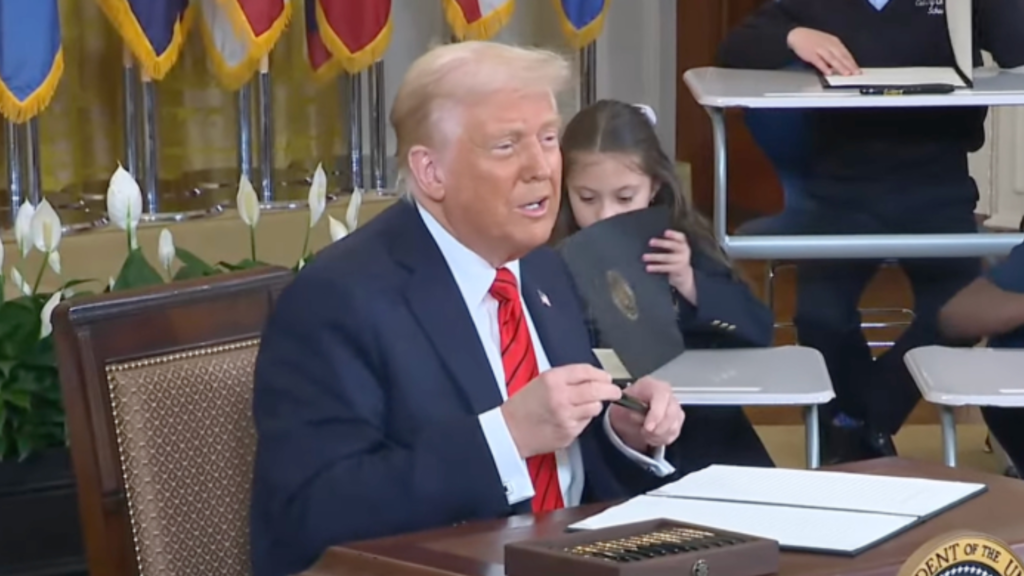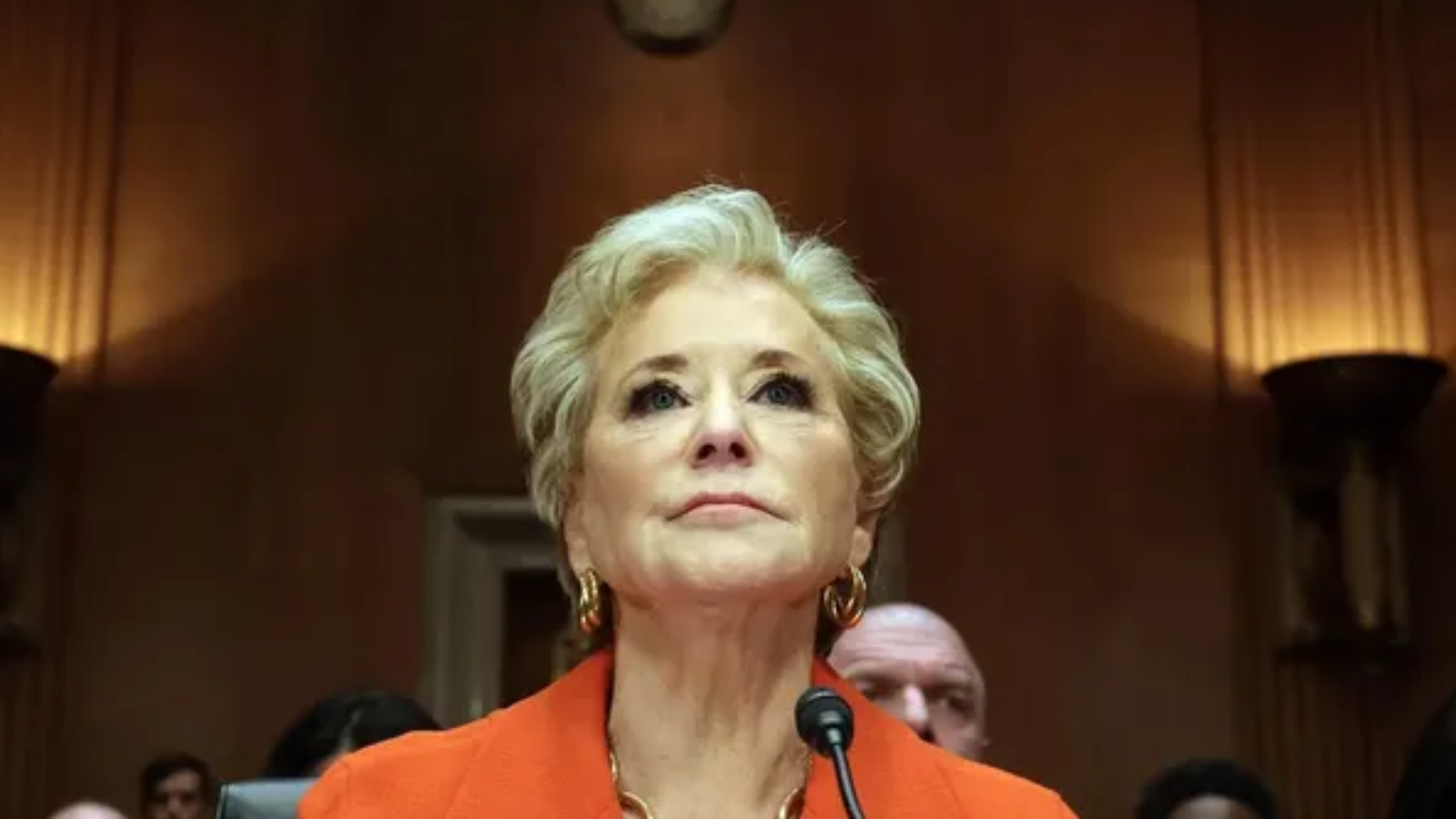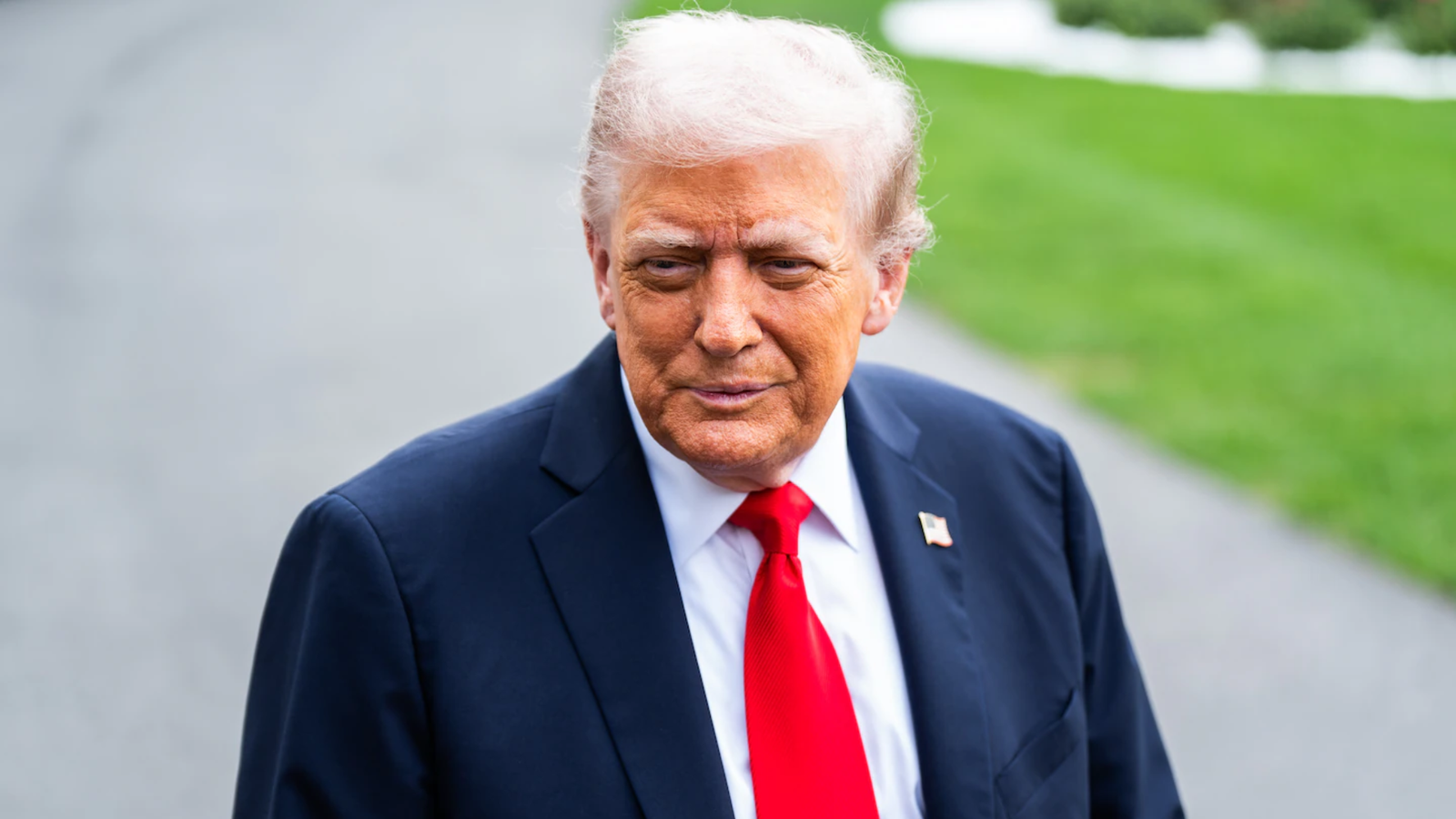
President Donald Trump signed an executive order on Thursday to dismantle the U.S. Department of Education.
The move, which aligns with Trump’s long-standing goal of diminishing federal control over education, is expected to face significant legal challenges and may require Congressional approval to take full effect.
Trump has frequently expressed his desire to cut back or completely eliminate the Department of Education, dating back to his initial presidential campaign.
In September 2024, he reinforced his commitment to reducing federal involvement in education, arguing that the government should not be using taxpayer dollars to “indoctrinate America’s youth.”
“Everybody knows it’s right, and we have to get our children educated,” Trump stated while signing the executive order. “We’re not doing well with the world of education in this country, and we haven’t for a long time.”
According to a White House fact sheet, the executive order is intended to shift control of education away from federal bureaucracies and into the hands of families and local governments.
The directive instructs Education Secretary Linda McMahon to “take all necessary steps to facilitate the closure of the Department of Education and return education authority to the states, while continuing to ensure the effective and uninterrupted delivery of services, programs, and benefits on which Americans rely.”
Despite the strong language in the order, Trump White House press secretary Karoline Leavitt clarified that the executive order does not entirely eliminate the Department of Education but will significantly reduce its size and scope.
“It’s not going to be shut down,” Leavitt told reporters. “Pell Grants and student loans will still be run out of the department in Washington, D.C., but the great responsibility of educating our nation’s students will return to the states.”
The executive order does not explicitly outline which specific programs or responsibilities will be transferred to state control. However, it confirms that some federal oversight will remain, particularly in areas related to financial aid for higher education.
Neither the White House nor the Department of Education immediately responded to requests for further clarification from news outlets.
The Trump administration has been vocal about its concerns regarding the state of education in the United States. Officials have pointed to declining test scores and dissatisfaction among Americans as justification for their efforts to reshape the education system.
A Gallup poll released in February 2025 found that only 24% of Americans were satisfied with the quality of education in the U.S., a sharp drop from 37% in 2017. Additionally, the 2024 National Assessment of Educational Progress (NAEP), commonly referred to as the “Nation’s Report Card,” showed stagnant math scores for eighth graders and declining reading scores for both fourth and eighth graders.
Related Stories:
These statistics have fueled arguments from Trump and his supporters that the Department of Education has failed in its mission and that states should have greater control over education policy.
While Trump’s executive order signals a dramatic shift in federal education policy, the process of dismantling the Department of Education is far from straightforward. Under Article II of the U.S. Constitution, Congress must approve the closure of a federal agency, meaning that Trump’s plan will require legislative action.
Currently, Republicans hold 53 seats in the Senate—short of the 60 votes required to overcome a filibuster and pass the measure. However, some conservative lawmakers have proposed alternative strategies to bypass this obstacle.
Rep. Thomas Massie (R-KY), who has long advocated for the abolition of the Department of Education, suggested that the Senate use the budget reconciliation process, which requires only a simple majority of 51 votes. Massie recently introduced legislation to eliminate the department by December 2026.
There is also some support for the measure in the Senate.
“I agree with President Trump that the Department of Education has failed its mission,” said Sen. Bill Cassidy (R-LA). “Since the Department can only be shut down with Congressional approval, I will support the President’s goals by submitting legislation to accomplish this as soon as possible.”
Even without full congressional approval to shut down the department, the Trump administration has already taken steps to reduce its size. On March 11, the Department of Education announced plans to cut its workforce in half, reducing its staff from just over 4,000 employees to approximately 2,000.
This downsizing has drawn sharp criticism from educators and policy experts, who warn that the cuts will have significant consequences for students, particularly those who rely on federally funded programs.
Teachers’ unions and education advocates have strongly opposed Trump’s executive order, warning that it will have devastating effects on students, particularly those from marginalized communities.

“If successful, Trump’s continued actions will hurt all students by sending class sizes soaring, cutting job training programs, making higher education more expensive and out of reach for middle-class families, taking away special education services for students with disabilities, and gutting student civil rights protections,” said Becky Pringle, president of the National Education Association (NEA).
The American Federation of Teachers (AFT) has also vowed to fight the order. The union has pointed to a February NPR/PBS News/Marist poll that found that over 60% of Americans strongly oppose eliminating the Department of Education.
Following reports that Trump planned to sign the directive, AFT President Randi Weingarten responded with a blunt message: “See you in court.”
Legal battles over Trump’s efforts to dismantle the Department of Education are already underway. On March 13, a coalition of attorneys general from 21 states filed a lawsuit in the U.S. District Court for the District of Massachusetts, arguing that the administration’s actions violate the separation of powers and exceed the authority of the executive branch.
“The administration cannot unilaterally dismantle a federal agency that Congress created,” the lawsuit states. “This is an unlawful violation of the separation of powers, and the Executive’s obligation to take care that the law be faithfully executed.”



